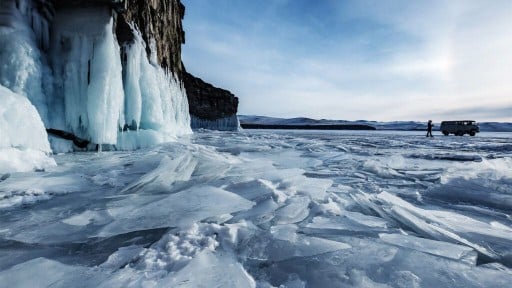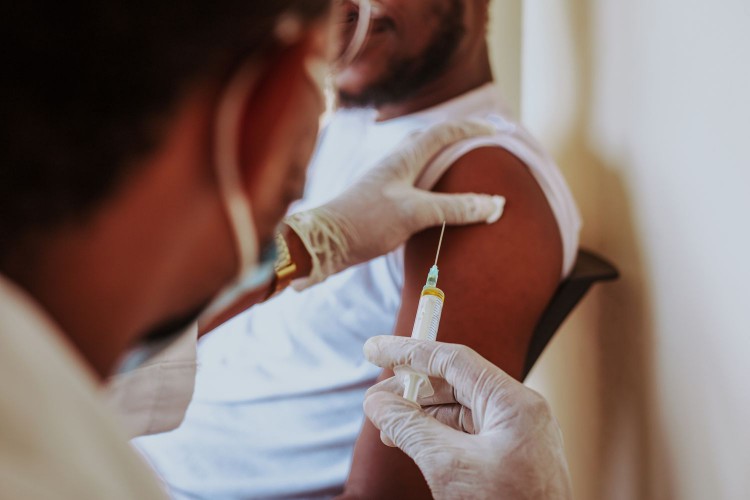
Scientists who have studied viruses in Siberian permafrost say that the threat of new viral agents to humanity is significant as the region’s temperatures rise.
As many as 13 viruses have been discovered in the permafrost.
While the threat of ‘zombie viruses’ is real, some scientists say there are still many unknowns about how they could affect humans.
As higher temperatures begin to affect Arctic climates, scientists are warning that ancient viruses buried deep in permafrost could pose an unprecedented threat to humans in the form of new pandemics.
A 2023 study by a team that has studied viruses in the Siberian permafrost identified 13 megaviruses that could infect humans; one of them was 48,500 years old. The study results appear in the journal Viruses.
At the forefront of these scientists’ concerns is how contemporary human immune systems would respond to so called “zombie viruses” that are potentially millions of years old.
Given the potential new shipping routes and mining operations that could occur in the Arctic north as ice melts, human exposure to these viruses could create opportunities for infection and global spread.
“While the literature abounds on descriptions of the rich and diverse prokaryotic microbiomes found in permafrost, no additional report about ‘live’ viruses have been published since the two original studies describing pithovirus (in 2014) and mollivirus (in 2015),” the authors of 2023 study write.
“This wrongly suggests that such occurrences are rare and that ‘zombie viruses’ are not a public health threat. “
How realistic is a ‘zombie virus’ pandemic?
Prof. Jean-Michel Claverie of Aix-Marseille University, the geneticist who led the 2023 study and has been working to examine viruses in Siberia since 2014, has said that he believes the threat to be understudied and real.
While the viruses they have studied have only shown potential to infect amoebae, it is their view that the danger to human populations needs to be taken seriously.
“I think it’s rather remote, but it’s there: You would have to, first of all, have the virus still be able to be resuscitated, right? And it would have to be in some fashion transmitted to a human being. Then, of course, the virus would have to have the inherent capacity to be transmitted readily from person to person. So you have a series of steps, if you will, that has to take place before that could happen.”
“To my mind the greater threats are from awaking slumbering bacteria, or by more indirect routes such as the spread of insect vectors for disease or changes in migration patterns of birds that can carry viruses around,” Dr. Stoye said. “I believe that viruses currently circulating in animals around the world should be seen an infinitely greater threat.”
What types of viruses could be lurking in the permafrost?
The 2023 study identified 13 different viruses of five different types: Pandoravirus, Cedratvirus, Megavirus, and Pacmanvirus, in addition to a new Pithovirus strain.
Dr. Stoye said some viruses previously isolated from permafrost are capable of infecting a variety of microorganisms, plants and animals.
“Many of these are bacteriophages but the list includes at least two human pathogens, those responsible for smallpox and influenza,” Dr. Stoye said. “By contrast, relatively few infectious viruses have been isolated from thawed permafrost, most likely because of an inherent instability of the viral nucleic acids, particularly those with RNA genomes, such as influenza virus.”
Dr. Schaffner explained that new viral agents are regularly introduced to human populations with some regularity, citing Zika, Ebola, and the recent coronavirus that led to the pandemic. But he said that it would be difficult to predict exactly what viruses are in the Arctic.
“It is possible that there could be viruses in animals that are in the permafrost,” Dr. Schaffner said. “There might be concerns that there would be viruses already in humans that were captured and preserved in the permafrost — they might have a more ready capacity to spread from human to human.”
”So we’re dealing with a whole array of unknowns. Influenza, of course, is one that as has actually been recovered, or the molecular signature of the virus has been recovered from people who were encased in permafrost,” he added.
How prepared are global health officials for a ‘zombie virus’?
The rapid response to COVID-19 and the accelerated development of vaccines could be a template for how any global organization could occur in the event of new viral spreads.
Dr. Schaffner suggested that the relative success against the pandemic in the last few years provides some sense of optimism, although the unknowns are still vast.
“We are much better organized today to recognize new viruses and respond to them than we were even 10 and certainly 20 years ago,” Dr. Schaffner said.
“The World Health Organization [WHO] has a surveillance mechanism that might exist around the world and is operative 365 days a year that’s constantly sampling sick people, trying to determine what viruses are them sick, identifying them, and then sequencing them quickly. That happened, of course, with COVID. And we went into gear and vaccines were created in record time. So we have that organizational capacity.”
– Dr. William Schaffner
Dr. Stoye, however, said that these Arctic regions do not have the most urgent threats to human populations.
“I would contend that the jungles of the world are still the most likely source of the next pandemic,” Dr. Stoye said. “However, it is hard to prepare for a virus with unknown properties.“
“Surveillance is key to a prompt response and this is where the emphasis should lie. Thus the further development of organizations like the WHO supported International Pathogen Surveillance Network (IPSN) and the European Versatile Emerging infectious disease Observator (VEO) are vital,” he emphasized.








